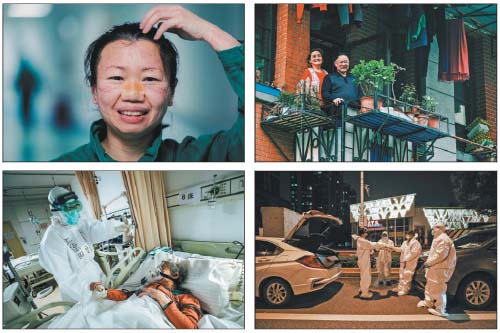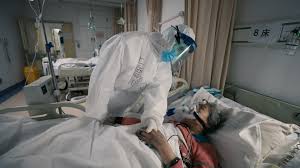Documentary follows days and nights of heroes in Wuhan

China Economic Net
Wuhan: On January 23 last year, Wuhan, the city hit hardest by COVID-19 in China, announced a lockdown in an effort to curb the spread of the outbreak. Over the next 76 days of the lockdown in the capital of Central China’s Hubei province, normal daily life halted-a sacrifice by the residents of the city and the province that helped other parts of the country.
A Chinese documentary film, Days and Nights in Wuhan, which takes a look back on the city’s battle against the pandemic, debuted in theaters in late January, with many in the audience saying they shed tears during its screening.

“It’s not a film that just wants to praise heroes. Those featured in it are ordinary people who are trying hard to live, making us see their greatness in an unusual time,” says a viewer on the popular review aggregator Douban, on which the movie has notched up 7.7 points out of 10.
Spanning a runtime of 95 minutes, the film was edited from more than 1,000 hours of footage shot by 31 cinematographers and camera crew during the city’s lockdown.
Unfolding through a restrained narration without a continuous voice-over heard in documentaries, the film follows around 10 groups of individuals, ranging from patients battling COVID-19 to medical staff and volunteers at the forefront, showing some of their most emotional moments.
Such shots include a severely ill elderly man displaying his strong will to live by listening to his grand-children’s poetry recitations on a portable player; an infected woman yearning to reunite with her infant who was being treated in another hospital; and a young woman retrieving the belongings of her mother who had died of COVID-19.
A special volunteer team is also featured in the film. Wang Ziyi, a 1988-born Wuhan native who led the team, organized drivers to send nearly 30 pregnant women in labor to hospitals when most vehicles in Wuhan were busy transporting coronavirus patients and relief supplies.

China Movie Channel, which presents Days and Nights in Wuhan, had shifted its focus from reporting film news to producing a series of TV shows about the country’s battle against the outbreak early last year. One of the shows featured 300 stars expressing their good wishes and support to people in Wuhan.
Li Wei, chief producer and head of the channel’s subsidiary website 1905.com, says the channel had accumulated a large number of video clips by March, laying the foundation for the documentary’s production.
“All of our crew were moved by the video material. In the footage, you can see the benevolence of doctors, the dedication of medical staff despite the risk of getting infected, and the tenacious vitality of patients fighting the virus,” says Li.
“More importantly, we can see the respect for life. During the lockdown, patients were all treated with care, whether a man in his 80s or a pregnant woman or a newborn baby. You can see the weakest patients being tenderly cared for,” Li says about what led her to produce the documentary.
With a wish to showcase how this unprecedented disaster brought out the best in the Chinese people and united them to fight together, Li invited director Cao Jinling to helm the film, with the crew spending around five months focusing on the job in a studio on the outskirts of Beijing.
Having earlier worked as a police officer, Cao had shifted to the film industry after writing the script for South Korean director Kwak Jaeyoung’s 2014 film, Meet Miss Anxiety. After earning a doctorate from the Central Academy of Drama, Cao was handling postproduction work of her directorial debut, Anima, when she received Li’s invitation.
Despite keeping a close eye on the news about the outbreak back then, Cao says she had never thought she would direct such a film as the theme was “too serious and heavy “for her.
A part of the preparation for the film was done before Cao joined the project in April. Her initial challenge was that the original footage came in various formats after being shot.
“When the camera crew were shooting in hospital wards, they had to compete against time. They had to put on thick protective outfits as well as use layers of plastic to entirely cover the cameras to avoid being infected, but that affected the equipment’s ability to shoot images clearly,” Cao says.
Despite the footage issues, the director says she believes the authentic scenes captured during the most difficult time in Wuhan have the power to draw the audience.
“The reality and emotions are more important than techniques,” Cao says, adding that it’s a lesson she’s learned from the renowned cinematographer Mark Lee Pingbing, an award winner at the Berlin film festival.
In October, Cao alongside the film’s crew traveled to Wuhan in an attempt to seek new content as a backup for the almost-finished film. She was surprised to see the city, with a population of 11 million, had recovered and a normalcy was back.
“Although there is no way to avoid uncertainty and unhappiness in life, it’s important to keep on going with courage, hope and love. That is the message our film wants to convey in this unusual time when the world is still fighting the pandemic,” she adds.





